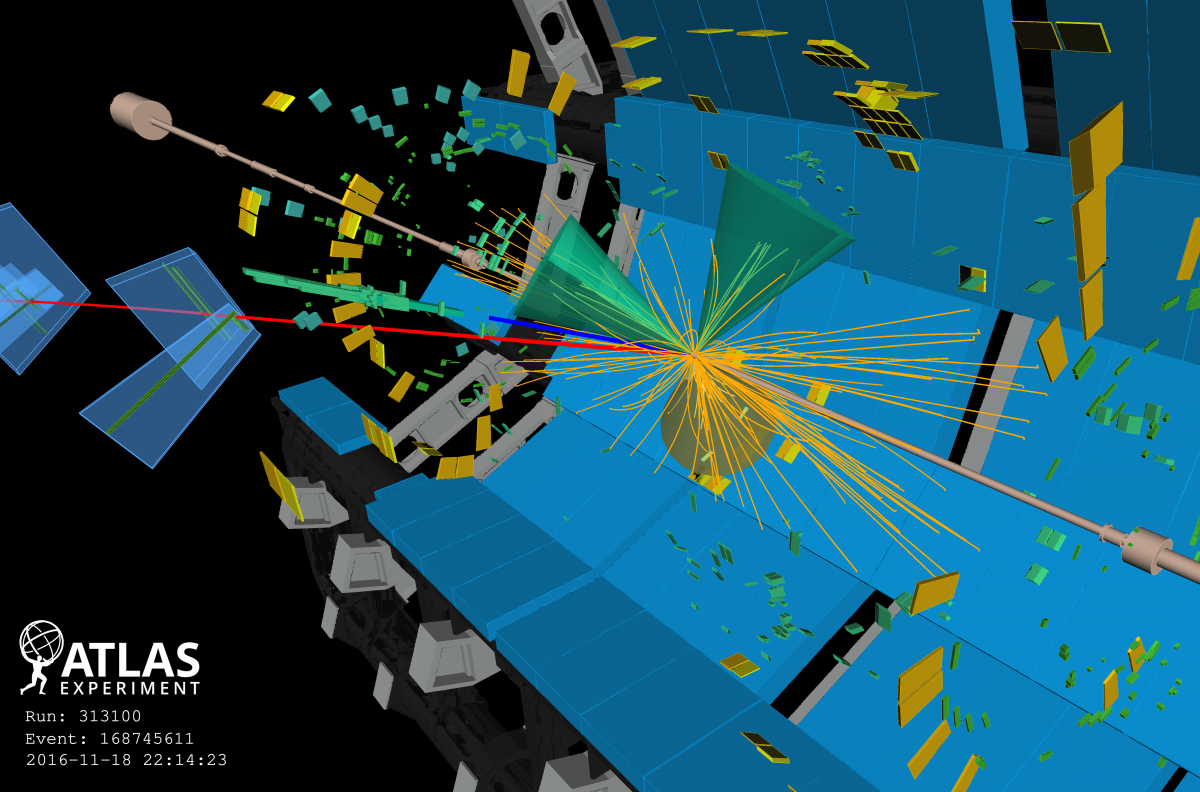The ATLAS experiment has observed the heaviest quark of the type t (top) in proton lead collisions

The LHC accelerator at CERN does not collide just protons, but also heavy nuclei, e.g. lead. In such collisions, conditions close to those as shortly after the Bing Bang can be simulated. In an early Universe the matter was in the state of a hot quark-gluon plasma and the top quark, the heaviest of all quarks, constitutes a new unique probe to study this form of matter. Owing to its large mass, it is born in processes leading to the quark-gluon plasma, rather than in the medium itself. Comparing processes known from proton-proton collisions to those with heavy ions, it is possible to study their production mechanism and use them as a probe testing the development of dense strongly interacting matter.
Dr. Jiří Kvita and Ph.D. student Petr Baroň from the Joint Laboratory of Optics are members of the team of six researchers who have conducted the analysis to the new result [1,2] after years of thorough work. They took part in its key aspects, from the work on the core software including ATLAS software modifications for the specific aspects of the heavy collisions, to calibration of individual detector-level objects, background modeling, but also the cross-check of the final result and final production of public plots. Other members of the team include researchers from the University AGH in Krakow, Poland, and from the Czech Technical University in Prague and the Silesian University in Opava, Czech Republic.
Compared to the previous result of the CMS experiment (also at LHC, CERN), the new ATLAS result is twice as precise, and the process is observed in two different decay channels.
The analysis has made its way through a thorough approval process, which lead to many modifications and improvements, from the Top quark and Heavy ion physics groups, dedicated editorial board, ATLAS physics coordinators and in the end also the whole ATLAS collaboration.
The results in the form of the measure cross-section were presented at one of the main conferences in the field, Quark Matter 2023 in Houston, by a team member from Krakow [3] while Petr Baroň will present the results at the Top2023 conference in Michigan [4].
The analysis got into the focus of the ATLAS Physics Briefing [2] and also social media [5]. Next steps will be the publication of the result in a peer-reviewed journal.

Event display of a candidate top quark pair event in proton-lead collisions in the ATLAS experiment, leading to a final state with an electron, muon, undetected neutrino, and hadronic jets, also containing a b-quark.
[1] https://atlas.web.cern.ch/Atlas/GROUPS/PHYSICS/CONFNOTES/ATLAS-CONF-2023-063/
[2] https://atlas.cern/Updates/Briefing/HI-Top-Observation
[3] https://journals.aps.org/prl/abstract/10.1103/PhysRevLett.119.242001
[4] https://indico.cern.ch/event/1139644/timetable/
[5] https://indico.cern.ch/event/1233341/
[6] https://www.facebook.com/ATLASexperiment,
https://twitter.com/ATLASexperiment/status/1699800326168248416?s=20



